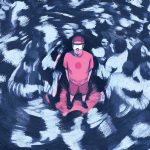The "immersive entertainment" boom takes user-centred experiences to new heights, but isn't it making culture a little insular, asksArwa Haider
What are you doing later: roaming through Van Gogh’s landscapes, time-travelling to ancient Egypt or maybe catching a posthumous gig from a musical hero? These are the kinds of “immersive” experiences we are increasingly flooded with, spanning dizzying possibilities that each promise to place us at the centre of their story. The immersive entertainment market globally wasvaluedat around $114 billion in 2024, and it is predicted to almost quadruple to roughly $442 billion by 2030.
As a journalist and life-long pop culture fan, I am simultaneously captivated and unsettled by immersive entertainment. My most memorable experiences of it were intensely personalised and powerfully emotive; they have made me exhilarated, tearful, even “cybersick”. When we are wrapped up in a narrative, particularly one relayed through a headset, we are removed from real time – arguably part of the allure.
It isn’t the escapism that fazes me, though – great culture liberates us from everyday constraints – it is the insularity. Immersive events elevate the subjective viewpoint, often at the expense of the communal energy that fuels social atmosphere, so even packed-out immersive shows can seem like solitary pursuits, with human companions resembling NPCs (non-playable videogame characters).
The cultural academic Keren Zaiontzcoineda sharp term for our consumption of immersive entertainment: “narcissistic spectatorship”. Onestudyfound VR use induced dissociative symptoms in 83.9 per cent of participants. The long-term effects remain nebulous, but research, including astudyof VR tourist experiences, has highlighted recurring themes of addiction to the experience and isolation.
Over at London’s Barbican Centre,Feel the Soundis a new immersive exhibition whose installations offer imaginative personalised features, includingYour Inner Symphony‘s “sensing stations”, which generate unique visuals by tracking our bodily reactions to music. Luke Kemp, who heads up the Barbican’s immersive programming, says these experiences respond to our need for “playful” cultural spaces, accessible regardless of prior knowledge: “It allows the audience to have agency, and to feel part of something.”
Robyn Landau at Kinda Studios, co-developer ofYour Inner Symphony, points out the link to interoception – our awareness of our body’s inner senses. “When we have these transformative experiences individually that connect us to ourselves, they actually transform how we show up in the world and the way we connect to others,” she says.
According to psychologist Sophie Janicke-Bowles, immersive experiences create scenarios where our “processing power is challenged just enough to keep us interested”. This “can have an incredible recovery effect on our psyche, where we can detach from our everyday concerns and cognitively, emotionally and even physiologically get absorbed into something different”, she tells me.
Having grown up clubbing, I am struck by how many immersive experiences evoke the dancefloor; the extraordinaryIn Pursuit Of Repetitive Beats, a multi-player VR homage to the UK rave scene in which networked headsets allow groups to interact in real time, is also at the Barbican.
But for me, there is still a curious tension at play in immersive entertainment, and I am torn about where the rapidly developing scene is taking us. It does give us an opportunity to tune into ourselves, but I am less convinced it amplifies our bond with those around us. If we remain fixated by our own reflections, then we are missing the bigger picture. Immersive entertainment might make VIPs of us all, but culture should also bring us together.
Arwa Haider is a culture journalist based in London
Receive a weekly dose of discovery in your inbox!
We'll also keep you up to date withNew Scientistevents and special offers.

